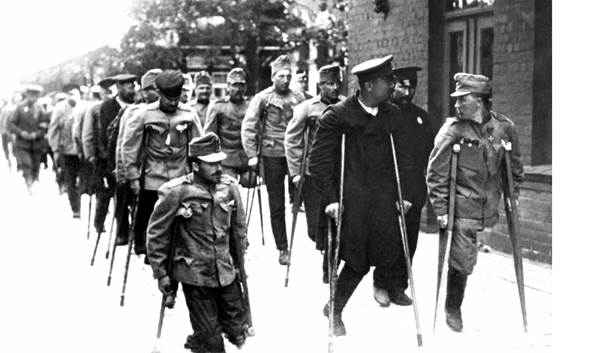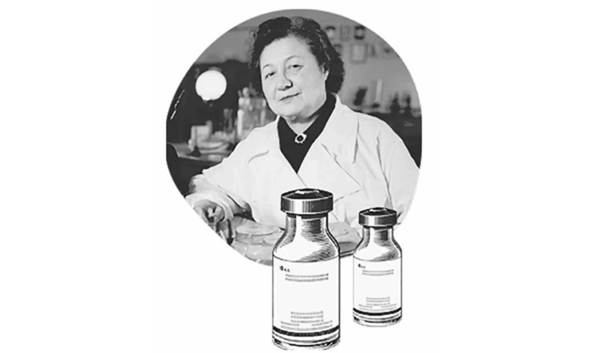Penicillin
The history of mankind is the history of wars. Wars are the most terrible thing that humanity has been able to create. The consequences of wars are thousands and millions of victims sacrificed on the altar of human vices that lead to their occurrence. Wars are fraught not only with the death of people, but also with hundreds, thousands of wounded, whose fate is subject to one god. Many of the wounded survive, others remain crippled, but a significant part of the wounded still die after terrible suffering. And the more terrible the war, the more destructive the weapons of war, the more wounded. Thus, in the First World War, out of a total of about 40 million victims, about 22 million were killed and about 23 million were wounded. And in World War II, more than 54 million people died and 90 million were wounded. It should be noted here that soldiers during the war died not only from bullets and shell explosions. A lot of soldiers died from wounds, diseases, infections. Even minor wounds often resulted in death. For example, during the Great Patriotic War, a huge number of deaths of wounded soldiers of the Red Army were due to purulent-aseptic complications. And how many soldiers of these wars were crippled as a result of limb amputations?

Disabled veterans of the First World War
For centuries, science has sought to find the right remedy for this ailment, not only of war, but also of peace. It was only in the 20th century, after the bloody harvest of the First World War, that this remedy was found. And by accident and thanks to ordinary mold!
In 1928, several factors converged at the same time, leading to one of mankind’s greatest discoveries. On that day, being a sloppy person by nature, the Scottish microbiologist Alexander Fleming left on his laboratory table the cups with microbial cultures that had not been washed after work and went to rest. When he returned from his vacation, he found mold in one of the cups. Which was not surprising. For sloppy people, the presence of mold, for example, in the kitchen, is almost an ordinary event. But Fleming’s genius lay in the fact that, being observant, he noticed that next to the mold, all the pathogenic microbes died. And here he made an outstanding conclusion – Mold secretes a substance that has a detrimental effect on microbes! In addition to Fleming’s sloppiness and powers of observation, the weather was also involved in the chain of happy accidents that led to the greatest discovery: the cold snap in London promoted the growth of mold, and the subsequent warming contributed to the growth of bacteria.
The mold that had a detrimental effect on the bacteria belonged to the species Penicillium Notatum. That is why Alexander Fleming called the substance that inhibits the growth of bacteria “Penicillin”. Realizing the significance of his discovery, Fleming did not patent the new substance. He decided to make a new medicine available to all mankind.
Unfortunately, further work on penicillin has been hampered for a variety of reasons. But it was necessary to isolate the new substance in sufficient quantities to continue the experiments, which Fleming did not succeed in. His work was continued by Oxford scientists Howard Florey and Ernst Chain. In 1940, they isolated the drug in its pure form in sufficient quantities and studied its therapeutic properties. On February 12, 1941, penicillin was injected into a human being for the first time. Florey and Chain’s patient was a London policeman who was dying of blood poisoning. After several injections, he felt better, but the supply of medicine quickly ran out, and the patient died. Due to the fact that there were no appropriate conditions on the territory of Great Britain, in 1943 Howard Florey transferred the technology for obtaining a new drug to American scientists and mass production of penicillin was established in the United States. In 1945, Alexander Fleming, Howard Florey, and Ernst Chain were awarded the Nobel Prize in Physiology or Medicine for the discovery of the first antibiotic in history.

A vial of penicillin for injection. United States. Year 1944
Thus, the United States took the lead in obtaining penicillin. Until 1943, penicillin was produced in the laboratory, so it was produced in limited quantities and therefore expensive. It was only in 1943, as a result of huge financial injections into the United States, that the production of penicillin became more widespread. For example, in 1943 the production of penicillin reached 22 billion oxford units per year, with production of 9 billion units in December 1943, and by the end of December 1944 it had increased to 200 billion units per month. This level of antibiotic production made it possible to meet not only its own needs, but also to sell it to other countries. In particular, our country purchased the first batch of penicillin in 1944 at a price of $4 per barrel. 40 cents per ampoule. But this is a huge amount of money for our country, taking into account the fact that we have been waging war with Hitler’s Germany for several years.
Such a situation was intolerable for our country: after all, there was a war with thousands of wounded soldiers of our soldiers, when three out of four wounded soldiers, who had already received qualified surgical care, died of gas gangrene, and the last of them remained an invalid with an amputated limb. Then the Soviet leadership appealed to the Americans to transfer the technology for the production of penicillin to us. The Americans dragged out the negotiations in every possible way, while asking for a fabulous amount for those times – 30 million dollars.
Then Stalin gave instructions to urgently develop a new medicine on their own. The choice fell on microbiologist Zinaida Vissarionovna Ermolyeva, under whose leadership a cholera epidemic was successfully prevented in 1942 in front-line Stalingrad. Having received the task, Yermolyeva directed all the efforts of her team to fulfill the government task. First, it was discovered that there was a fungus-based miracle cure that the Allies were successfully using at the front. Due to the fact that the allies were in no hurry to share the culture of fungi and medicine, it was necessary to solve all these problems themselves. Our scientists have gone through many different types of molds. A real hunt for mold was launched. Employees examined any mold they came across under a microscope. In search of different types of mold fungi, employees climbed basements and damp bomb shelters. And then success came. Finally, the right fungus was found – Penicillium Crustosum, related to the fungus Penicillium Notatum with which Alexander Fleming worked. Soviet penicillin was soon isolated from the found fungus, the effectiveness of which was higher than that of the American one. This antibiotic was named after the fungus itself – Crustosin. After that, mass production of the Soviet antibiotic was urgently established in the country.

Z.V. Ermolyeva and the Soviet penicillin she created. Year 1942
The significance of Yermolyeva’s discovery cannot be estimated. The use of a Soviet antibiotic at the front immediately dramatically improved the treatment of festering wounds and infections. The survival rate of soldiers in hospitals has increased significantly. After all, during the Great Patriotic War, a huge number of deaths of wounded soldiers were due to purulent-aseptic complications. According to the official data of the Ministry of Defense of the Russian Federation, 1,102,800 people died from wounds during the Great Patriotic War. Many of them died in medical battalions and hospitals. But there would have been many times more victims of the war. Thanks to our doctors, 72% of Soviet soldiers and officers returned to service during that war. Marshal of the Soviet Union Konstantin Rokossovsky said that “we won this war wounded.” For comparison, in Hitler’s army, only 1/3 of the servicemen who recovered from wounds returned to the ranks. But in Germany, until the end of the war, they could not establish the production of this antibiotic.
With her discovery of the antibiotic, microbiologist Zinaida Yermolyeva performed a great feat by saving thousands of Soviet soldiers. No wonder she was called the Marshal of the Invisible Front.
Here we must pay tribute to Alexander Fleming. According to some estimates, the discovery of penicillin saved about 200 million people during and after the war. The discovery of this drug has been repeatedly recognized as one of the most important scientific achievements in the history of mankind.
